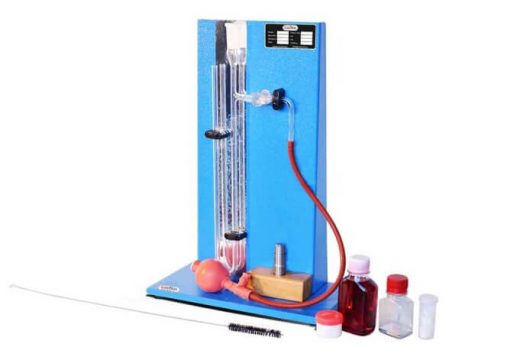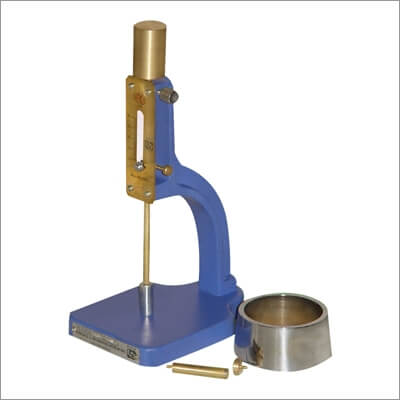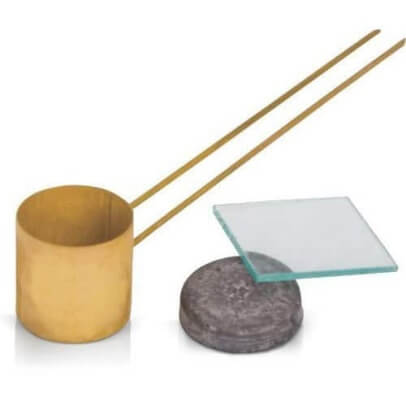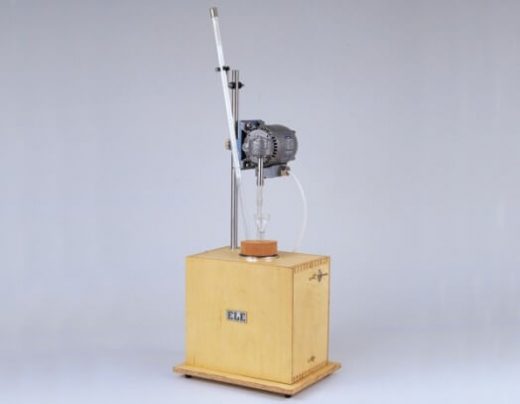Cement we use may go bad during transportation and storage prior to its use in work.We need to test the cement for a good quality and better performance in concrete mixtures. Broadly there are two tests for cement-
- Field Testing
- Laboratory Testing
Field Testing
It is generally done when cement is used for small or minor works. Following are the field tests-
- After opening the bag of cement, we should give a good look, There should not be any visible lumps present in it. Colour of cement should be greenish grey.
- It should give a smooth and gritty feeling when pinch of cement is feel between the fingers.
- If we thrust our hand into the cement bag, it must give a cool feeling.There should not be any lumps inside.
- If we throw some amount of cement into a bucket of water, it should float sometime before sinking.
- A cube made from a stiff paste of 100gm cement and little water is to be put in a glass plate. The glass plate is taken slowly under water in a bucket. The shape of the cube should not be deformed while taking into water. After 24 hours cube should retain its original shape.
If a sample of cement truly satisfies the above tests we may say that the cement is not bad. But the above tests do not really indicate that the cement is really good for important work or big structure. For using cement in important and major structure, it should satisfy the Indian Standard specifications. It is possible only in laboratory testing to confirm the requirements of specified physical and chemical properties.
Laboratory Tests
Following are the laboratory tests for cement:
(i) Fineness Test
(ii) Setting time Test
(iii) Strength Test
(iv) Soundness Test
(v) Heat of Hydration Test
(vi) Chemical Composition Test
Fineness Test
The fineness of cement has great importance on the rate of hydration and hence rate of gain of strength. Finer cement has greater surface area for hydration and hence strength develops at a faster rate. Fineness of cement is tested in two ways-
- By sieving
- By determination of specific surface area.
Sieve Test:
In this test, about 100 gm of cement is taken on 90 micron sieve. Air-lumps are broken down by fingers. The sample is sieved continuously with circular and vertical motion for 15 minutes. The residue left on the sieve is weighed. The value should not exceed 10% for ordinary cement. This test is rarely used now-a-days.

Fig 1: Apparatus for fineness of cement.
Courtesy: civilalliedgyan.com
Air Permeability Test:
Here fineness of cement is represented by specific surface area(sq cm/gm or ).Fineness of cement is represented by specific surface expressed as total surface area in sq cm/gm of cement. It is also expressed as /kg. Lea and Nurse Air Permeability Apparatus is used in measuring specific surface area of cement. The principle is based on the relation between the flow of air through the cement bed and the surface area of the particles comprising the cement bed.
Fineness can also be measured by Blains Air Permeability Apparatus. This is most commonly used in India. In this method a cement sample of 2cm height is placed on a perforated plate and pressure is applied. The size of perforation is 40.The manometer is connected to the top of the permeability cell and air is turned on. The lower end of the permeability cell is then slowly connected to the other end of the manometer. The rate of flow is so adjusted that the flowmeter shows a pressure difference of 30-50 cm. The reading of manometer is recorded. The process is repeated till the ratio between reading of manometer to pressure difference attains a constant value.

Fig 2: Air Permeability Apparatus
Setting time Test:
During the time of actual construction dealing with cement paste, mortar and concrete should remain in plastic state. Certain time is required for mixing, transporting, placing, compacting and up to finishing. Time interval between the moment that water is added to the cement to the time that the paste starts loosing its plasticity is called initial setting time of cement. Normally a minimum of 30 minutes is given foe mixing and handling operation. Vicat’s Apparatus is used for setting time test. Here 500 gm of cement sample is taken having consistency 0.85P and made a cement paste. The paste shall be gauged and filled into the Vicat’s mould in specified manner within 3-5 min. The square needle to the Vicat’s plunger is attached and lowered it gently to make contact with the surface of the mould and it is quickly released. As the needle penetrates only to a depth of 33-35 mm from the top, the test is completed. The time should not be less than 30 minutes for OPC and 60 minute for low heat cement.
The final setting time is the time elapsed between the moment the water is added to the cement and the time when the paste has completely lost its plasticity and has attained sufficient firmness to resist certain definite pressure. In this test, square needle is replaced by a needle with annular collar. Here the paste should attain such hardness that the needle doesn’t pierce through the paste more than 0.5 mm. The final setting time should not be more than 10 hours.

Fig 3: Vicat’s Apparatus for setting time test
Strength Test
The compressive strength of hardened cement is most important of all the properties. In this test 555 gm of standard sand, 185 gms of cement (1:3;ratio of cement to sand) is taken in a tray and mix them with a trowel for 1 minute and water is added of quantity ()% of combined weight of cement and sand. The three ingredients should me mixed thoroughly until the mixture shows uniform colour. The time of mixing should not be less than 3 minutes. Immediately the mortar is filled into a cube mould of size 7.06 cm. The area of the face of the cube will be equal to 50 sq cm. The mortar should be compacted for 2 minutes. The compacted cube should be kept at a temperature of and at least 90% relative humidity for 24 hrs. Three cubes are tested for compressive strength at 1 day, 3 days, 7 days and 28 days where the period of testing being calculated from the completion of vibration. The compressive strength shall be average of strengths of three cubes for each period respectively. The compressive strength of 33 grade OPC at 3 days, 7 days and 28 days is 16 MPa, 22 MPa and 33 MPa respectively. Load applied gradually as 0 to 35 N//min on cubes by using UTM machine.
Soundness Test
Cement after setting should not undergo any appreciable volume change. It causes serious difficulties for the durability of structures. The cement having some quantity of free lime, magnesia and excess sulphates undergoes large change in volume as the time elapses. This test is performed to ensure that the cement does not show any appreciable expansion. The soundness of cement is determined by “Le Chatelier’s method” or by mean of “Autoclave test”.

Fig 4: Le Chatelier’s Apparatus
Heat of Hydration Test
The reaction of cement with water is exothermic. The reaction liberates a considerable quantity of heat. It is estimated that about 120 calories of heat is generated in the hydration of 1 gm of cement. The apparatus used to determine the heat of hydration of cement is known as calorimeter.60 gm of cement and 24 ml of distilled water are mixed for 4 minutes at a temperature between 15C. Three specimen glass vials 100mm are filled with this mixture, corked and sealed with wax. The vials are then stored with mixture in a vertical position at . The heat of hydration is obtained by subtracting the respective heat of solution of hydrated cement from the heat of solution of unhydrated cement calculated nearest 0.1 calorie.

Fig 5: Heat of Hydration Apparatus
Chemical Composition Test
Here, ratio of different composition of cement is calculated. It should be present within the limit. Ratio of percentage of lime to percentage of silica, alumina and iron oxide is known as Lima Saturation Factor (LSF) shall not be greater than 1.02 and not less than 0.66.
The weight of insoluble residue residue shall not be more than 4%.
Weight of magnesia shall not be more than 6%.
Total loss on ignition shall not be more than 5%.
Total sulphur content calculated as sulphuric anhydride shall not be more than 2.5%
If you have a query, you can ask a question here.


